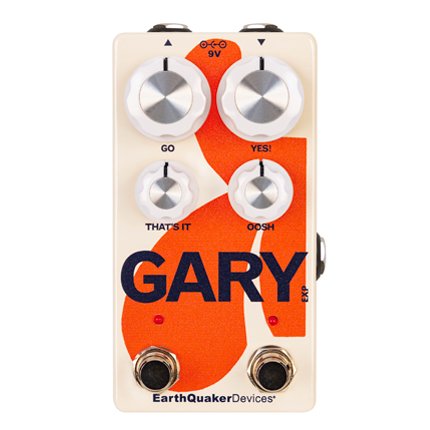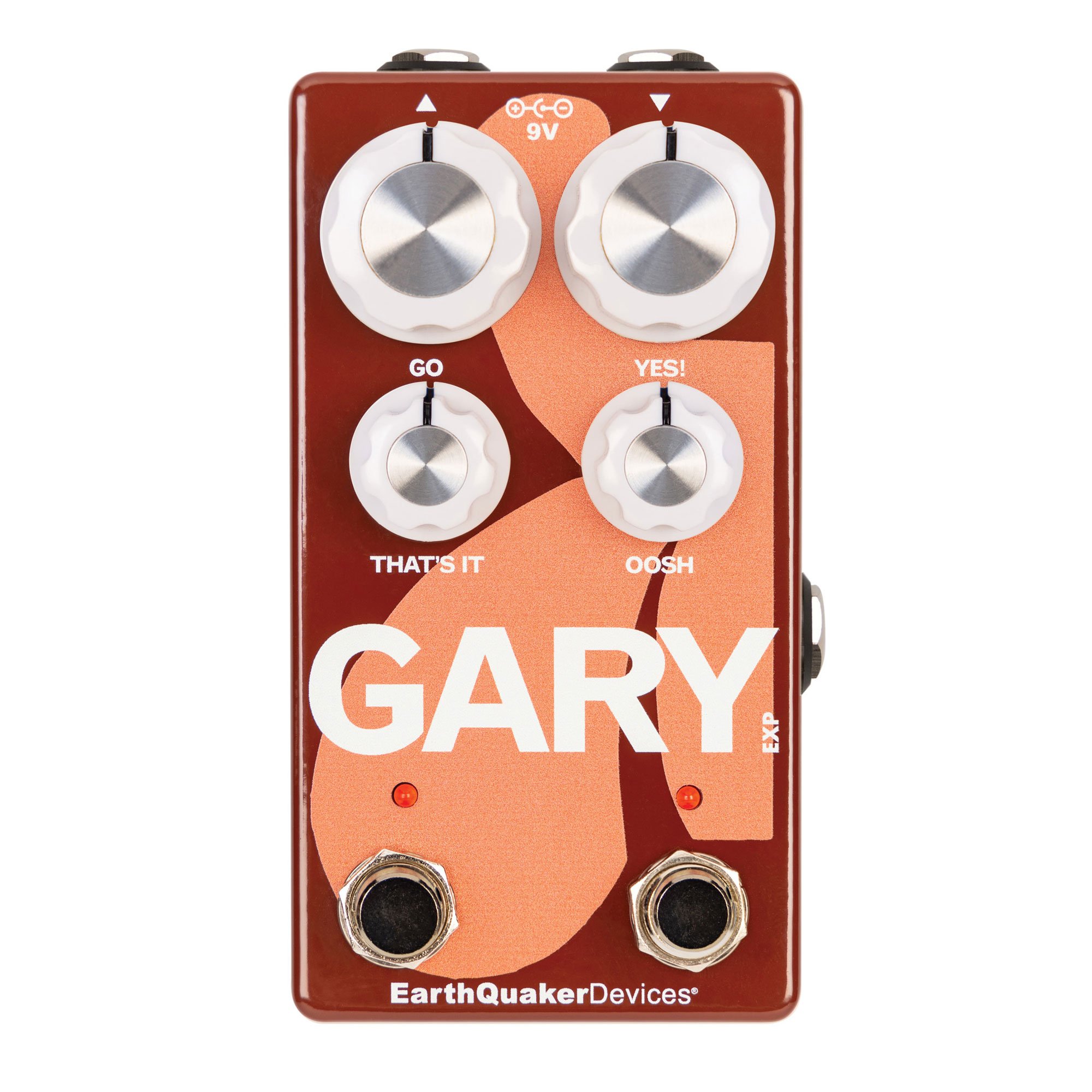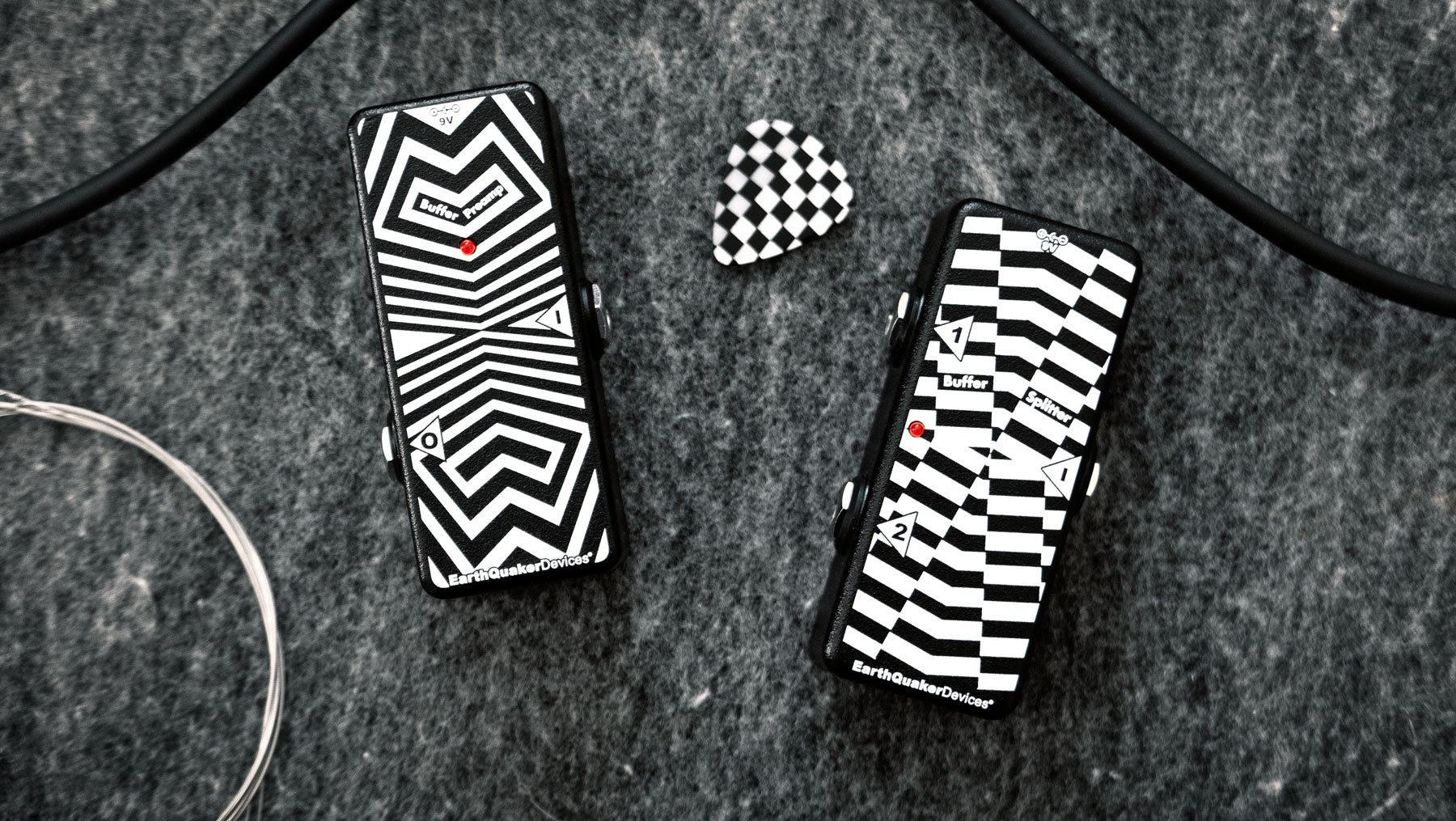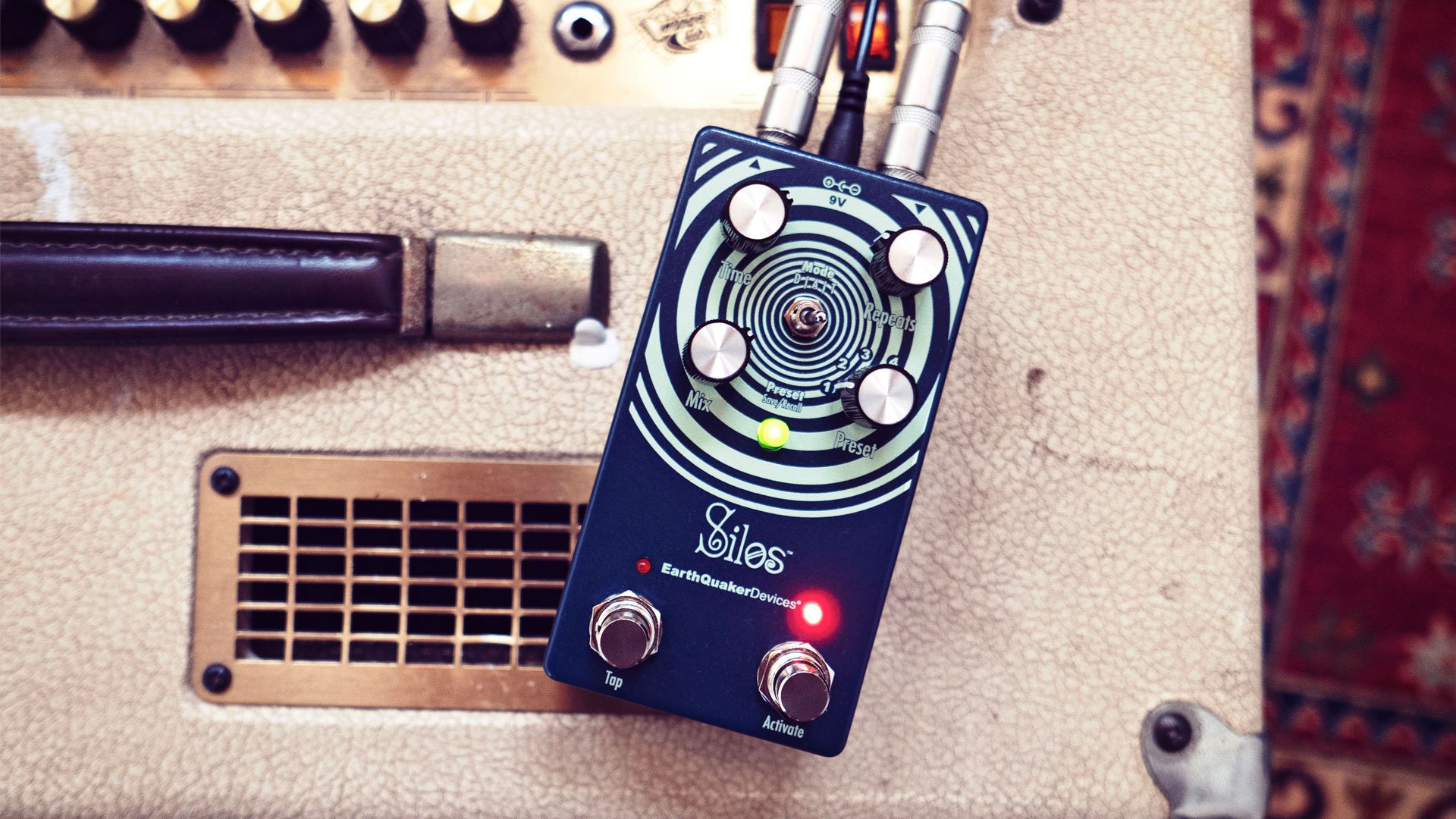Hangin’ with Gary
Dan Epstein
Hey there — how were your holidays?
Mine were pretty chill, except for the copious time I spent hangin’ out with my new pal Gary. That guy has no chill at all, to be honest.
I met Gary through EarthQuaker Devices’ Jamie Stillman and IDLES guitarist Lee Kiernan, who created Gary out of the sort of fiendish collaboration you typically see in creepy black and white horror films from the 1930s. On paper, Gary’s concept is simple: He’s basically an opamp overdrive conjoined with a gated fuzz. But the results, as in those films where the mad scientists inevitably go too far, may initially seem too wild and weird to wrap our feeble minds around. Still, once you take the time to get to know Gary and really understand where he’s coming from, you just might find yourself wondering what you ever did without him.
It would be fair to say that Gary has a split personality. The left side of his brain is a pretty straightforward affair, intuitive in its workings and more than happy to be of assistance. But then there’s the right side of his brain, which is unstable, chaotic and almost impossible to tame. We’ll get into that in a moment — but first, let’s talk about his more congenial left side.
The left side of Gary is essentially a modified version of the “Green” circuit from EQD’s now-discontinued Gray Channel® Dynamic Dirt Doubler, long a favorite pedal of Lee’s. Though that overdrive featured three clipping modes, Lee only ever used its “N” mode, which removed all clipping diodes from the circuit — so that’s what he and Jamie installed in the left side of Gary’s brain. To access this overdrive, just tap Gary’s left Flexi-Switch, then use the Go knob to adjust the amount of opamp drive, and the That’s It knob to adjust the master volume. (Yes, that’s what the controls on this side of the pedal are called; even at his most conventional, Gary’s still a little… eccentric, shall we say?)
The tones that emanate from the left side of Gary’s brain are wonderfully rich, dynamic and downright loud; in just about every setting I’ve dialed in, the opamp overdrive gave my Strat’s single coil pickups a beefier, more rounded presence, while also bringing out the mid-range sparkle of my SG’s humbuckers. There are several settings for great “always on” rhythm tones, like the one with both knobs at noon (which makes for a nice chunky clean tone, especially when combined with your bridge pickup), or the one with Go at 7 o’clock and That’s It at 5, which delivers a really appealing combination of low-end growl and trebly snap. Putting Go at 8 o’clock and That’s It at 3 is good for some indie-style jangling and droning, but this setting also sounds absolutely killer when you send the signal into a fuzz pedal like EQD’s Park Fuzz Sound.
The lead tones that Gary’s left side produces are even tastier. Set Go at noon and That’s It at 9 o’clock to produce a nice gritty low-end boost; then dial Go up to 3 o’clock to achieve a fat, Marshall-like roar. Crank Go all the way up to 5 o’clock and boost That’s It to 10, and you’ll get a sweetly distorted overdriven tone that sustains for days when you’re using your neck pickup with the guitar’s tone knob dialed all the way down. Crank both Go and That’s It all the way up, and you’ll revel in some beautifully heavy saturation that nonetheless cleans up impressively whenever you back off a bit the guitar’s volume knob. For even more fun, run Gary’s left side into a distortion pedal like EQD’s Zoar Dynamic Audio Grinder, and hear your amplifier tubes tremble and sweat under the onslaught of the big rock action that you’re slamming them with.
If that was all Gary brought to the table, we’d get along just fine. But it’s the other side of Gary — that ripping square wave fuzz with an envelope-controlled variable pulse width — that really makes him such a memorably unique and unpredictable character. Of course, if we’re going to examine that other half of Gary’s personality, we should probably talk first about what the terms “square wave,” “pulse width” and “envelope” mean.
A square wave is a waveform that symmetrically alternates between two fixed values; it’s called “square wave” because the positive and negative amplitude peaks of the waveform pulses are both evenly chopped off. (All fuzz pedals utilize signal clipping in one way or another, but square wave clipping creates the that harsh, “synthy” sound that you hear in a lot of early fuzzes.) Pulse width is a measure of elapsed time between the leading and trailing edges of a single waveform pulse, and an envelope is a description of how a sound’s qualities (including attack, decay, sustain and release) change over time from the moment it begins to the moment it fades out.
Got that? Good! Because the Oosh knob on Gary’s right side controls the volume of his square wave fuzz, and the large Yes! knob (like I said, Gary’s a bit on the eccentric side) controls the sensitivity of the fuzz’s envelope. The more sensitive the envelope becomes, the greater impact your picking attack has upon the fuzz’s pulse width — and the harder you hit it, the more the pulse width narrows, resulting in a sound that’s increasingly pinched, glitchy and weird.
Oh sure, Gary can behave like a “normal” fuzz pedal — just tap the right Flexi-Switch, keep the Yes! control all the way down at the 7 o’clock position, and crank up the Oosh to noon or more, and you’ll have a nasty old-school fuzz that sounds especially smooth and “zippery” on the neck pickup with the tone rolled back. But if you want to add an element of glitchiness and unpredictability to the proceedings, just roll your guitar volume back a bit as well and hear what happens; Gary is super-sensitive to input volume, so even just slightly lowering it can make the fuzz sound like it’s starting to disintegrate.
From there, start turning Yes! clockwise, listening to how envelope changes and Gary responds as you go. I found a real sweet spot on that control between 10 o’clock and noon; with Yes! set between those parameters, and Oosh up around noon, it sounds like a heavy square wave fuzz that’s teetering on the edge of sickness. But when you really dig into the guitar and hammer out some four-four barre chords, Gary coughs up a wonderfully smeary, phase-y sound that gets even nastier the harder you play.
But be forewarned — once Yes! passes the noon mark, Gary becomes increasingly sassy and temperamental. As the pulse width narrows, the notes you play will become ever more spitty and glitchy, sometimes even disappearing mid-bloom, and your amp will sound progressively close to complete collapse. Which, of course, can be enormously cool! Plug an expression pedal into Gary’s expression port (maybe take him out to dinner first), and you’ll be able to toggle in and out of the sonic chaos and adjust the tonality of his fuzz on the fly as you play.
When Yes! is turned all the way up to 5 o’clock, the harder you hit the strings, the more chaos Gary will create — but picking gently can produce some interesting effects as well. For instance, with Yes! cranked and Oosh at about 9 o’clock, try playing a single-note melody with a really (and I mean) light touch to achieve a nasally, sustain-free twang reminiscent of an electric sitar.
And then, of course, you can rock Gary’s left and right sides simultaneously, which makes for an especially powerful combination that can help Gary’s special brand of madness cut right through an onstage mix. But if you really want to get Gary riled up, put a gain pedal (like, say, an EQD Plumes) in front of him. Remember how his right side is super-sensitive to input volume? Well, just check out how nuts he gets when he’s being driven by a high-gain signal.
For example, with a gain pedal pushing Gary, and Yes! in the 10-to-noon sweet spot, that gloriously smeary, phase-y effect I mentioned earlier becomes even more wonderfully smeary and phase-y. Or, with Yes! at 11 o’clock and Oosh at noon, try playing legato hammer-ons high up on the neck with your neck pickup engaged and the pickup’s tone rolled all the way back; between the crazy sustain and phaser-like whooshing it produces, it sounds like you’re playing a theremin in a windstorm…
So yeah, I think I’ll be hangin’ with Gary for a long time to come; I have a feeling he’s got a lot more crazy shit he wants to show me, once I figure out how to coax it out of him. He’s got a lot to show you, too — so if you and your guitar are looking for a new best friend, don’t be afraid to give Gary a call.
Photos by Tom Ham.
Dan Epstein is an author, editor, journalist and guitarist based in New York's Hudson Valley. He writes about his latest musical obsessions at Jagged Time Lapse, and songs from his latest musical project The Corinthian Columns can be found at corinthiancolumns.bandcamp.com







